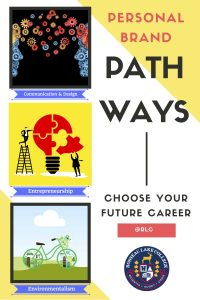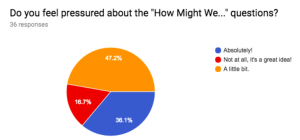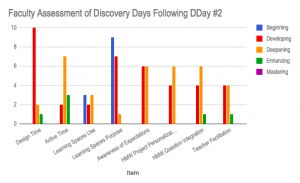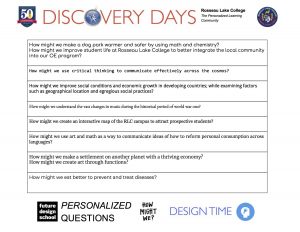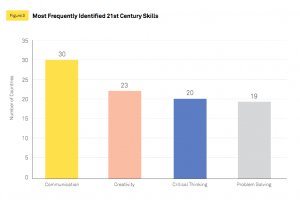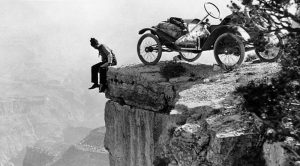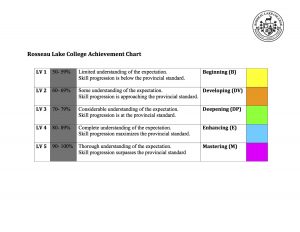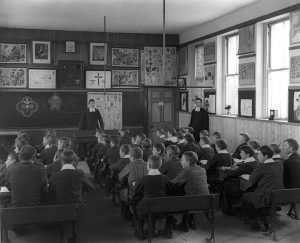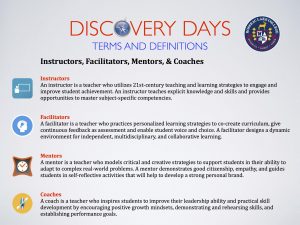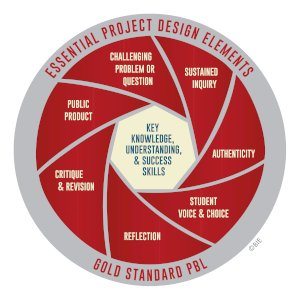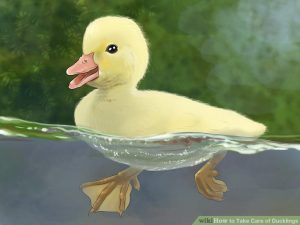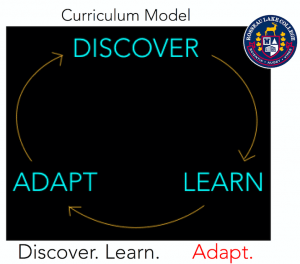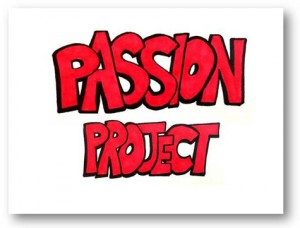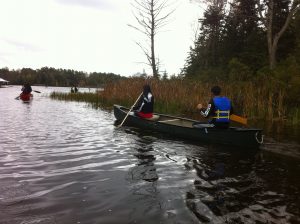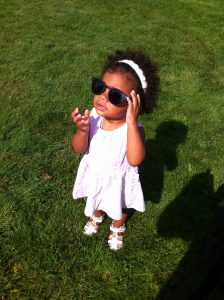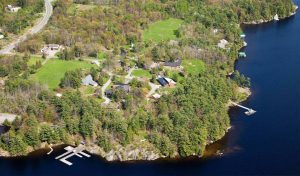 Place-based Education and the Montessori Method combine to create a new micro-school for adolescents capable of saving humanity. (12 min. read)
Place-based Education and the Montessori Method combine to create a new micro-school for adolescents capable of saving humanity. (12 min. read)
We shall not cease from exploration, and the end of all our exploring will be to arrive where we started and know the place for the first time. (T.S. Eliot)
Imagine you’ve somehow attached hot-air balloons to your current school (yes, just like in the Pixar film UP—the only cartoon yet to make me cry!) and lifted it high into the air to move locations, depositing the entire building intact onto another section of the city you find yourself teaching in. Now I want you to ask yourself a series of simple questions: Would this make a difference to how the school functions? Would the community around you notice or care? Would your staff or students have to radically rethink what it is they do every day? If the answer is no then your school has not yet fully immersed itself in place-based education.
In a 2017 paper, associate professor Gregory A. Smith from Lewis & Clark College in the U.S., states: “At the heart of place-based education is the belief that children of any age are capable of making significant contributions to the lives of others, and that as they do so, their desire to learn and belief in their own capacity to be change agents increase. When place-based education is effectively implemented, both students and communities benefit, and their teachers often encounter a renewed sense of professional and civic satisfaction.”
I chanced upon the pedagogy of place-based education through the online blog, Getting Smart and found a multitude of resources around the subject (including this brilliant overview PDF download here). At the time I was working for a private outdoor education high school in northern Ontario as their academic director. They were looking for strategic ways to improve community connections while at the same time taking full advantage of a unique and abundant natural locale. Place-based education was just one of many deeper learning innovations that took hold of my imagination that year, but it planted seeds in me which would eventually lead to my current position as co-founder of an adolescent Montessori school in Dundas, Ontario, called SiTE (Situated in Transformative Environments).
In a traditional Montessori school, the learning environment represents far more than what recent educators refer to as the Third Teacher —it is in fact the only teacher! The teacher in a Montessori setting takes a necessary step back and becomes a guide on the side, observing the spontaneous inquiry of the child within what Maria called the prepared environment. The role of the guide is to simply stay out of the way of the curious child, to carefully follow their lead, trace their concentrated pursuit in completing tasks called jobs (Montessori takes the concept of purposeful “work” very seriously). Far from this being a free-for-all of competing self-interests, or even a more contemporary station-rotation of differing interests, what Montessori engineered—as a response to over a decade of scientific observation of children—are the carefully curated sensorial materials which enable learning to be an experience of freedom within limits; flowing and flowering throughout the room these children discover manipulatives in all subject areas that develop knowledge from the hand through the heart to the head. And that order is of the highest importance! If you’ve ever taught children, at any age—and let’s face it, the same can be said of most adults—you know they (we/you!) can only ever truly learn anything by doing.
Scientific observation then has established that education is not what the teacher gives; education is a natural process spontaneously carried out by the human individual, and is acquired not by listening to words but by experiences upon the environment. (Education For A New World)
Anyone who has ever seen video of a Montessori class in full “work-mode” is astonished both at the level of quiet concentration displayed by such active kids and the autonomous engagement each and every child gives to practical life activities. What Dr. Montessori uncovered over 100 years ago in Italy was nothing short of a hidden miracle to solve the problems of education, both then and now: the central role of the student in directing their own learning, the application of real-world contexts to achieve authentic engagement, the capability of youth to concentrate on challenging tasks well beyond their years through mixed-aged mentorship, and perhaps most vital of all, properly curated learning spaces, which cause the brain to light-up and the body to grow-up. In Italian, the word Maria used for this preparatory space was ambiente, which is closer in meaning to the word ambience than the English translation, environment; also light years different from our more prosaic modern eduterm, “learning space”; ambiente speaks to the aesthetic and atmospheric balance needed for a space to inspire and motivate. In Montessori, there is a place for everything and everything has its place.
So what happens when you transfer a foundation-years interior design revolution to a dynamic and variable high school setting? What constitutes the prepared environment in an adolescent Montessori school, or what Maria called the 3rd Plane of Development, where teenagers are similar to toddlers only in so far as theres’ is a mental/emotional growth instead of a physical one? Teenagers from age 15-18 are in the stage of becoming social newborns. What happens when you don’t have as much control over the stationary environment as elementary or Casa teachers do to facilitate this social/emotional (SEL) need? What if your classroom is, say, located on a farm with animals instead of desks, or, in my case, if you don’t have a set classroom at all.
The answer for me and my co-founder, Tony Evans (Director of both DVMS and Strata Montessori, a middle-school actually located in the woods, with chickens), was in combining the values of an adolescent Montessori experiential learning model—which has at its core a greater expectation of community integration, service opportunities, and personal responsibility—with the place-based ethos of maximizing local learning spaces, leveraging project-based initiatives, and achieving mastery of relevant real-world skills. SiTE Schools was born from this idea to provide purposeful work in meaningful contexts to adolescents deserving autonomy. I believe in this hybridization so much it informed the basis of the SiTE values model which begins with the appreciation of PLACE, before moving on to PURPOSE, PERSISTENCE, and finally, PERSPECTIVE. This has become our 4P’s version of the hand-heart-head Montessori motto. Progressive educators call the transformative concept of creating a curriculum from locally relevant surroundings, place-based learning. Psychologists use the term situated cognition, a theory that argues all knowledge is situated in activity, bound by social, cultural, and physical contexts. I simply call it the only way to provide dignity and initiative for teenagers in the 21st-century!
After having taught in public schools in Australia for 7 years and private schools in Canada for over 4 years, I now find myself in the unique position of disrupting education through the development of a high school (Grade 10-12) that doesn’t have a building. Instead, the community is our campus. The real inspiration, however, for a school-without-walls comes not from a thesis but from the vibrant town our school is located in and I call home, the hidden Ontario gem known as Dundas. Surrounded by the natural beauty of the escarpment, with over 100 waterfalls, botanical gardens, conservation areas and the Bruce Trail, Dundas is a pristine valley town which is older than Hamilton. It has a modern Historical Museum, a Carnegie Gallery, professional art and dance schools, a thriving public library, dozens of successful small businesses, and is literally down the road from McMaster University. In other words, this is the perfect place to create a “prepared environment” for adolescents who are craving a tertiary preparatory experience, one that lets them roam widely and safely, with real responsibilities extended beyond the classroom walls and into the community at large. How else can we expect teenagers to know how to be responsible in their lives or take ownership over their future decisions of study and work if they’ve never been given the opportunity to test this out in the real world?
Every year millions of youngsters need to decide what to study in college. This is a very important and difficult decision. You are under pressure from your parents, your friends, and your teachers, who have different interests and opinions. You also have your own fears and fantasies to deal with… It is particularly difficult to make a wise decision because you do not really know what it takes to succeed in different professions, and you don’t necessarily have a realistic image of your own strengths and weaknesses. (Yuval Noah Harari, 21 Lessons for the 21st Century)
Already SiTE has leveraged local learning opportunities by conducting civics meetings at the Town Hall with working and retired politicians, pitch sessions with volunteer boards for securing the possibility of managing a Winter Market, brainstorm sessions with the Museum to co-create an exhibit for Remembrance Day, service opportunities with the Down Syndrome Association of Hamilton (DSAH), and countless more experiences yet to come (including invasive species extraction, local watershed research, entrepreneurial media mentoring, AI lab experience, small press publishing, etc.). Traditional schools have access to these practical life lessons, and certainly teach the subject-specific knowledge components in the classroom, but often relegate the skills exposure to a single field trip, with all the administrative bureaucracy that goes along with having to travel and organize large amounts of students. Never mind having to assess learning outcomes at the same time! This is why I believe summative assessment is still so dominant in schools today—because it is easy to administer and control! The agility of a small school embedded in a community means that our response to changing events and flexibility in hosting experts is amplified. With one or two guides in close proximity to the same group of students all day, diagnosing learning skills, discovering gaps in knowledge, and mentoring interpersonal wellbeing becomes a matter of course and not something that has to fit into a manufactured Flex Time. Instead of traditional academics suffering at the expense of innovative approaches, a smaller, mobile, one-room-school-house of vertical integration ensures a level of modelling and interdisciplinary learning that is virtually impossible to duplicate in a regular school setting. Deeper learning and assessment on this scale can happen anytime, and anywhere. I say this after only four weeks of curating SiTE’s first term of curriculum, and the difference to me is already profound.
This is by no measure a new approach to education. American charter schools have been experimenting with place-based, public museum-based, or corporation sponsored lab-schools for well over two decades, and community-based schools are as old as culture allows, many rural areas knowing no different. In the current Canadian education system, however, there is less choice in the market for parents and students looking for a more affordable alternative to the private system yet still providing progressive value-based programming; values which a pluralistic public system, nobly aligned as it is in creating a common standardized experience, just can’t afford to give. While technology is helping to bridge the gaps (social, economic, gender, race, etc.) in many instances, allowing remote areas to participate in best-practice, online or blended courses have increasingly become the norm for high school students everywhere. The loss of face-to-face mentoring and modelling in place of virtual adaptive learning is happening in real-time and on our watch. Although no one can predict the long term positive or negative results of such a paradigm shift in education, we can point to rising levels of anxiety, depression, bullying, and screen addiction in youth as possible consequences of these decisions. I have personally seen teenagers completely disaffected and disillusioned by online learning tools which in many cases are producing the desired diagnostic feedback improvements administrators covet but are not making learning any more relevant or remembered by the user. Too often the edtech reports focus on what is to be gained rather than what is simultaneously being lost by the software. In the scenario I’m presenting, what’s lost is not only a personal connection to the teacher but a sense of shared continuity with the local culture, landscape, and historical heritage of community. It’s clear the challenges of the modern world will not be addressed by technology alone.
At a time when most public school class sizes are vastly exceeding the ability of teachers to differentiate and personalize their learning, and many private schools are shielding themselves economically from urbanization through infrastructure capital campaigns, what adolescents are craving most is a way to reconnect with the real-world. This is so well considered a current need in education that a high number of schools have included the development of 21st-Century Competencies or real-world skills in their strategic plans and mission statements. And yet, most attempts to innovate within the confines of the traditional box seems to create an opposite-yet-equal desire for teenagers to leave the box by any means necessary. Where is the “real-world” in a school setting? This unsurprisingly results in a rise in old-school truancy and new-school digital escape into social media or gaming through mobile phones, where anything is more interesting because it is happening far away from the predictable here and now. The government solution: ban mobile phones! Instead of investigating the source of disengagement into distraction, it becomes more efficient to police a sensitive area of adolescent identity (remember, social newborns!) instead of teaching them the responsible and ethical use of technology at this crucial stage. At SiTE Schools our phones are used for the purposes they were intended: the amplification of inquiry or creativity, recording of observed experience for reflection purposes, and facilitation of practical life (communication, bus schedules, reminders, GPS locators, etc.).
A corollary argument can be found in the representation of so-called “snow-plow” or “helicopter” parenting. As a way to respond to this tsunami of over-protection, schools once again have tried to adopt effective rhetoric around the 21st-century values of resilience, grit, adaptability and flexibility. At the same time, however, greater emphasis in teaching and learning (UDL principles) has been placed on the creation of exemplars, explicit step-by-step instructions, detailed rubrics and scaffolded assignments, to prevent (or avoid!) the burden of not reaching every child at their educational level and potentially upsetting the very parents who are so concerned their child is losing the ability to think for themselves in the first place. We see this pattern repeated in post-secondary institutions where professors are noticing a lack of initiative in Millennials towards independence and critical thinking, even in disciplines where this skill is paramount. What lies unstated here, of course, is the responsibility these same institutions have in creating dependancy around those very structures which many adolescents feel as yet another top-down method of alleviating their responsibility, pushing further away the necessity of practicing adult autonomy and all of its inborn “failures”.
If education is always to be conceived along the same antiquated lines of a mere transmission of knowledge, there is little to be hoped from it in the bettering of man’s (sic) future. (
Finally, amalgamation of mid-sized public schools and provincial cut-backs have created an education clot in most urban areas where the average school-size hovers around 1500 students. Considering the human capacity to have meaningful social relationships maxes out around 150, a 10% increase in forced connectivity can produce a detrimental experience of community. Private schools, although being able to fundamentally reduce class sizes, nevertheless compete on a growth advancement model, increasing their schools admissions by fundraising for more property real-estate. No amount of Harry Potter-style co-curricular House activity can improve the quality or experience of community when the spectre of anonymity becomes the default setting for the vast majority of students who can’t be bothered to be involved in branded events and become more adept at hiding than participating. This may me negligible for the toddler or elementary child, or even the middle-school student whose experience of the world tends to keep them within the boundaries of their perceived social sphere. The adolescent, however, becomes acutely aware of the discontent and distance between themselves and others on a hyper-scale. High school peer cliques is one thing to observe, but sensing the us-and-them gulf between students and teachers and teachers and administration and administration and staff and staff from the school and the school from the community itself is quite another. What sort of model for society are we building for our youth if we don’t value all perspectives as equal in a shared environment? How can these perspectives ever be united in a hierarchal system that doesn’t truly represent the real-world? Where are the babies? Where are the elderly? Where is the life all around that informs us of our interconnectedness?
In most respects, there is nothing new about place-based education. It is an attempt to reclaim elements of the learning processes most children encountered before the invention of schools. Throughout most of humanity’s tenancy on this planet, children learned directly from their own experience in the places and communities where they lived. They explored their world with peers, imitated the activities of adults, participated in cultural and religious ceremonies, and listened to the conversations and stories of their families and neighbours. Most of this learning was informal, although at important transition points such as puberty, initiation rites provided them with more direct forms of instruction about community understandings regarding the world and adult responsibilities. In this way, children grew into competent and contributing members of their society, able to care for themselves and for others in ways that sustained the community of which they were a part. This outcome with its focus on both individual and social sustainability is also the goal of place-based education. (Gregory A. Smith)
To be fair, many schools around the world are doing exceptional jobs creating unique cultures all their own. Some schools are blessed with rich locations that embrace all the diverse opportunities on offer and students involve themselves in real-world experiences through co-op, co-curriculars, and the innovative practices of progressive teachers keeping things relevant. Alumni in both public and private schools speak of a togetherness and camaraderie for their former alma mater that sometimes even transcends the actual felt memory of such a place. Traditionally, this has been good enough to provide a sense of community-in-training for citizens, which has trickled into the civilizing process of negotiating work/family life outside of schooling. In today’s world, however, where connectivity with millions has likewise also produced a feeling of anonymity by the millions, the loss of the real local in favour of the digital global has become an epidemic.
Unfortunately, teaching kids to embrace the unknown and to keep their mental balance is far more difficult than teaching them an equation in physics or the causes of the First World War. You cannot learn resilience by reading a book or listening to a lecture. The teachers themselves usually lack the mental flexibility that the twenty-first century demands, for they themselves are the product of the old educational system. (Yuval Noah Harari, 21 Lessons for the 21st Century)
The challenges are immense, and by no means has SiTE Schools’ hybrid iteration solved the main issue here, which is the ability to scale an authentic experiential program on a mass level without dismantling the current Canadian education system at its roots. Radically repurposing the intention of high school from a conveyor belt of standardization serving post-secondary admissions to a network of highly effective individualized learning nodes serving individuals and communities will take time, if it happens at all. This brand of social justice schooling might remain elitist by virtue of its minimalist alternative design. In 1995, David Tyack and Larry Cuban of Stanford University, coined the term “grammar of schooling” to characterize the long-lasting and unchanging core elements of schooling. Many of their arguments were persuasive to those educators who witnessed decades of alternative pedagogies result in little more than utopian promises. Unlike the universal aspects of language acquisition, however, schooling has continually adapted to its changing socio-political context. It still has four wheels and an engine, yes, but that engine is becoming fusion instead of combustible, and those wheels will soon drive themselves.
I do know this: reimagining education is the job of everyone involved in education. It’s not just the teachers but the students and parents who are experiencing first-hand the stagnation of systems which may not be adapting to our complex world and may be rendered useless if climate change predictions become a reality or AI technology shifts the very fabric of our future notions of the workforce. Bringing innovation to any and every aspect of your practice as a teacher ensures the possibility for new and exciting outcomes to occur. This possibility brings dignity and engagement to adolescents as they become participants of the greater change they already feel on the inside and intuit in the rapidly evolving world around them. Aspects of place-based education can act as an antidote to the alienation and apathy felt by teenagers and increase not only their intrinsic motivation towards learning, but also their self-worth as part of a larger community.
Establishing lasting peace is the work of education; all politics can do is keep us out of war. (
So go ahead and pop those balloons already. Land safely in your own backyard and view it again through fresh eyes. We need 1000 crazy ideas to improve this world and education is just one place to start. We don’t know where or who these ideas will come from next. Perhaps a student you currently teach will become inspired by your relentless pursuit of the new. Remember, Charles Darwin lived in the same small village (Shrewsbury) most of his life, spending only four years abroad, travelling on the HMS Beagle around the world and to the Galapagos islands where he imagined an entirely new concept for humanity through the careful observation and experience of place.
Follow me on twitter @EBDaigle
Follow SiTE Schools on twitter @sitedundas or on Facebook @siteschools
References
Harari, N. Yuval. 21 Lessons for the 21st Century, London. Jonathon Cape. 2018
Montessori, Maria. Education for a New World: The Montessori Series. Clio. 1989
Smith, A. Gregory. Place-Based Education. Lewis & Clark College. Oxford University Press. 2017



